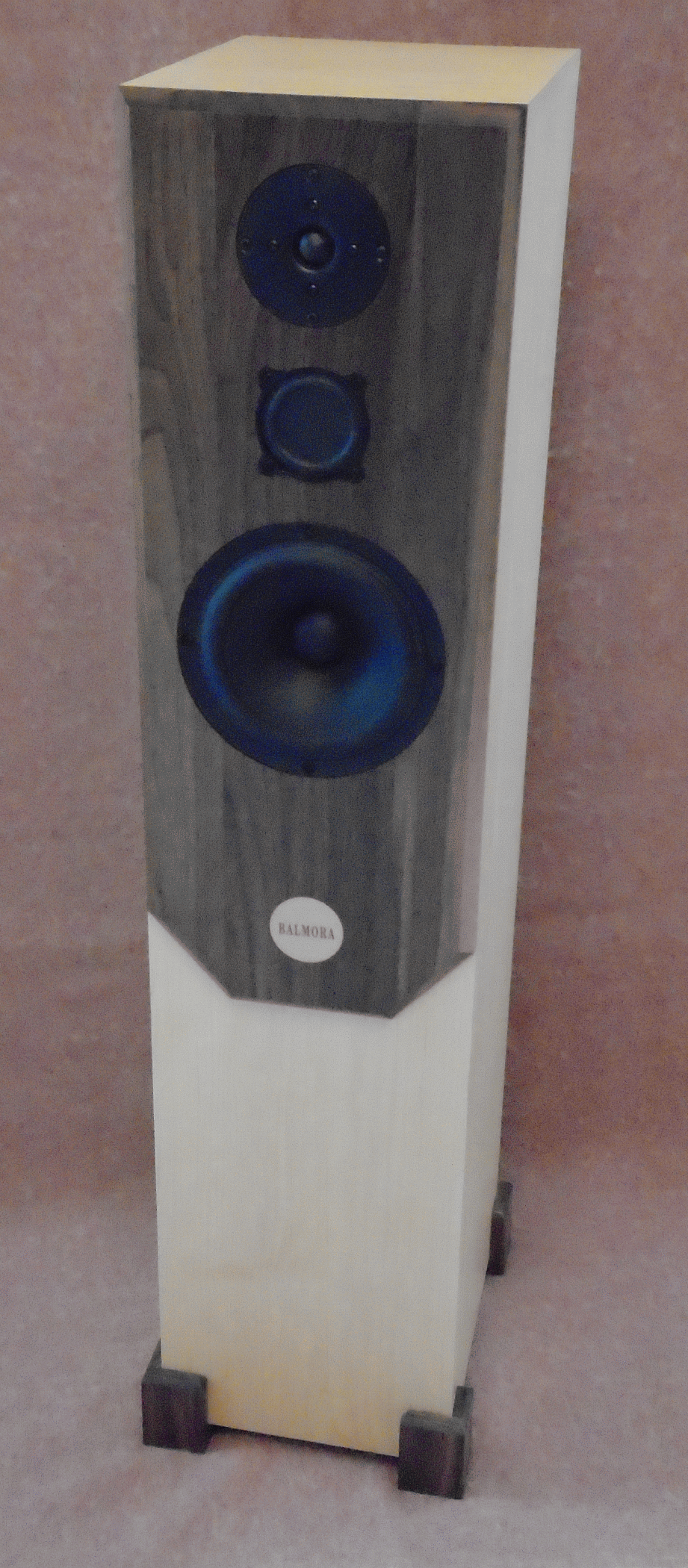
Balmora
Designer:
Paul Kittinger
Project Desctiption:
The BALMORA is a high-performance, 3-way, floor-standing speaker with its woofer in a mass-loaded transmission line (ML-TL) that can be built for a moderate cost.
Design Goals:
This speaker was designed specifically to compete in the under-$200 category at the 2016 MWAF without its operating range and overall performance being unduly limited by this cost constraint. In other words, what was desired was a speaker with high performance but moderate cost.
Driver Selection:
The first driver I chose was Tectonic’s TEBM46C20N-4B Balanced Mode Radiator for the midrange. A couple of commercial speaker manufacturers use this driver in their products, one of which is Dennis Murphy (Philharmonic Audio) who speaks highly of it. It performs quite well over a wide frequency range, is very small and is happy working in a really small, sealed box. Having picked this midrange driver with its extended range, I was able to use a reasonably priced, small-dome tweeter because it wouldn’t need to be crossed below 3 kHz (and the midrange driver could allow crossing even higher). Too, a small-diameter tweeter usually has better dispersion than is typical of 1-inch dome tweeters. So, I chose the SB Acoustics SB19ST-C000-4 because it has a reputation for very good performance. With the standard list prices of the midrange and tweeter totaling to just over $78 for both speakers, there was a maximum of ~$121 available for a pair of woofers to keep the total driver costs under $200. I had decided upfront to use a 6-1/2 or 7-inch woofer. I wanted to use a Dayton Audio RS180-4, a driver that I’ve used in a couple of previous designs, because it performs really well in a transmission line, has a bit higher sensitivity due to its 4-ohm impedance and a compatible price. Seeking advice, I was told that since the Tectonic driver has a 4-ohm impedance, it might be tough to come up with a crossover having an impedance characteristic that wouldn’t be difficult to drive and/or wouldn’t be rather complex. So, I started looking for another woofer with a higher impedance. The only one I found that I knew would work well in a transmission line, and had a list price in the ballpark, was the SB Acoustics SB17NRX35-8. The first vendor I looked at had a list price of a bit more than $62, which would make the total driver cost about $4 too high. I was disappointed, but then I looked at a second vendor and found their standard list price was just under $58. Yea, that got total driver costs down to just over $194!
Enclosure Design:
As already stated, the cabinet design is an ML-TL. More specifically it’s a single-fold line that’s 5-feet long, with the first foot of the line comprising ~1/3 of the line’s total volume and an area just over twice the area in the remaining 4 feet of the line. This is a variation on a so-called coupling chamber but with the woofer’s center located at the transition from the larger area to the smaller area instead of being located entirely within the coupling chamber. On the cabinet’s back panel is the mass-loading port; together it and the 1/4-wave resonant frequency created by the line’s length tunes the system to just under 30 Hz, resulting in a predicted anechoic f3 of 37 Hz, an f6 of 30 Hz, and an f10 of ~25 Hz (see the modeled bass response graph). For the midrange driver there’s a sealed box (3.5 inches square and 1.25 inches deep internally), creating a volume of ~15 cubic inches. The tweeter’s center is 37 inches above the floor, a generally good height.
Enclosure Assembly:
I used 18-mm Baltic Birch Plywood for the cabinet, except for one piece of 1/2-inch MDF for the divider that creates the folded line (see the cabinet drawing). Internal cabinet dimensions are 7.5 inches wide, 9.5 inches deep and 38.5 inches high. There’s a solid, horizontal divider (Brace D) near the bottom of the cabinet that creates a compartment for housing the crossover assembly. The top 12 inches of the cabinet form the coupling chamber and the first 12 inches of the line’s length, with Brace A creating the transition to the line’s remaining 4 feet and smaller area. Polyester fiber is located from the top of the cabinet down the front to Brace C, 6 ounces in the coupling chamber and another 4 ounces below it. Installing the fiber uniformly by weight creates a stuffing density of 0.75 lbs/ft3. There’s a side-to-side brace in the middle of the coupling chamber made from a 1-inch diameter dowel. All of the braces and the MDF line divider are 8 inches wide and installed in 1/4-inch-deep dadoes in the cabinet’s sides. Dimensions for the mass-loading port are 2-inch ID and 3-inch length. The relative locations of the port and woofer in the line optimize the shape of system’s overall response. The small enclosure for the midrange is filled with denim insulation (more on this in the crossover design discussion). I made a bezel from solid, 1/2-inch thick walnut, glued to the main baffle where the drivers are mounted, thus providing both esthetic and structural benefits. The back sides of the woofer and midrange through-holes are chamfered at 45 degrees. I also made decorative feet from solid walnut. The cabinet is covered with maple veneer and it, the bezel and feet were finished with 5 coats of satin polyurethane (first two coats brushed on and the last 3 wiped on). On its feet the cabinet stands 40 inches tall, has a width of 9 inches and a depth of 11 inches deep. Connections for the driving amplifier are a pair of binding posts on the back panel near the bottom.
Crossover Design:
Dan Neubecker designed the crossover and it uses 13 components (see the crossover schematic). The woofer crosses to the midrange at ~480 Hz with asymmetrical slopes, 4th-order on woofer and 2nd-order transitioning to 4th-order on midrange. The midrange crosses symmetrically to the tweeter at ~3800 Hz with LR2 slopes (see the simulated responses with crossover in place). Dan optimized this design based on the 30-degree, off-axis measurements because that best matched the overall power response when compared to the sum of 0-15-30-45 and 60º measurements. Overall, the impedance magnitude varies between 4 and 8 ohms from 60 Hz to 20 kHz, barely dropping below 4 ohms between 100 and 200 Hz. Impedance phase is also quite good overall, staying between -20 and +20 degrees from just over 100 Hz to 10 kHz; there’s an impedance magnitude of 8 ohms to counter a -60 degree phase angle just below 60 Hz. Note that the tweeter is wired in reverse polarity from both midrange and woofer. I built my pair of crossovers with the components shown on the schematic at a total cost of just over $199, essentially identical to the total driver costs. Substituting components from PE with lower costs, but still using polypropylene capacitors where called out, total component costs for a pair should not exceed $165. Regarding the midrange’s sealed box, I originally lined it with 1/2-inch thick foam rubber. Dan’s initial driver measurements showed several glitches in both impedance magnitude and phase from the midrange, with a prominent glitch at ~2 kHz. So he experimented with other materials in this chamber, ending up with a 3-1/2-inch cube of denim insulation to replace the foam rubber because it resulted in a much smoother midrange response.
Conclusion:
A pair of BALMORA speakers can be built for $500 or less, depending on how you finish them and any changes you might make to crossover components choices. You could dispense with the solid walnut bezel if desired. The 2.83v/1m sensitivity ended up at 85-86 dB, and even though the impedance is generally 4 ohms from 60 Hz to 1 kHz, it doesn’t present a difficult load for the driving amplifier. How do they perform and sound? For my initial listening session I gathered up 5-6 demo CDs I had taken to a several DIY events, giving me 25-30 short tracks containing a good variety of music. My first comment to my wife was, “these are REALLY good”! She was also listening and commented, without any prompting from me, that the high frequencies (like from piccolos, violins in their upper ranges and percussive instruments) were reproduced prominently (where appropriate) and accurately without any harshness or stridency. After more extensive listening I was really pleased with the sound, finding no need to tweak the crossover. The sound is very well balanced across the frequency spectrum. With only 6-1/2 inch woofers, these aren’t likely to rattle windows, but a pair of them will safely generate 99-100 dB SPL (at 1 meter) from ~40 Hz on up. The overall sound is spacious (if it is in the source), sweet (without being rolled off) and quite articulate (without being “ruthlessly revealing”). Some of this is due to the Tectonic midrange driver, which performs way above its pay grade IMO, but more important, to Dan’s excellent crossover design.

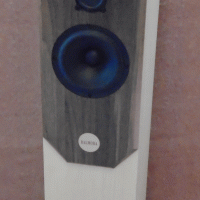
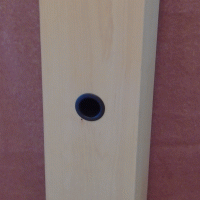
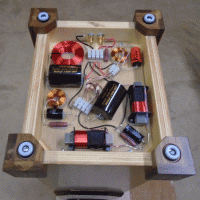
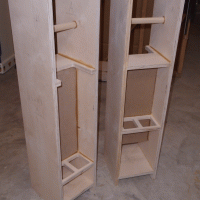
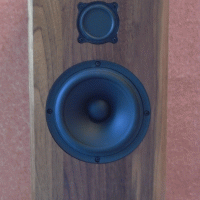
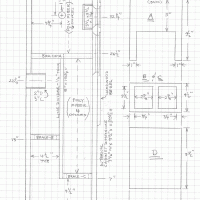
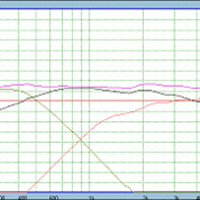
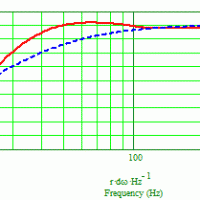
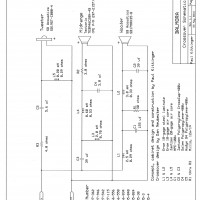
My name is Ken and I am 54 years old and heavily into music from the 70s and 80s like Pink Floyd and Genesis, you know what Im talkin about, I also build and repair Vacuum Tube Amplifiers as a hobby and side business, I am constantly looking into building speakers that match the look of the wood trim and accents that I build into my Amps and thanks to you I have found the next look in an Amp and Speaker System to match, these Speakers just look like they are part of and belong in a High End System, I think the Crossover needs to be behind a plexiglass panel in the back and mounted on a nice piece of black walnut too where the craftsmanship can bee seen and appreciated, great job on the idea and the technical know how to conceive a project like this, thanks
The crossover schematic is not displaying properly. Is there a parts list?